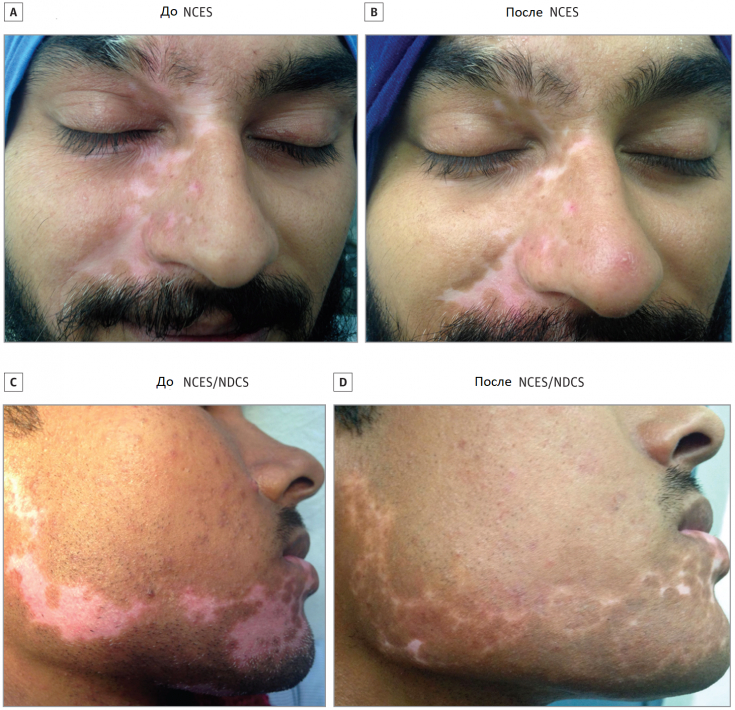Noncultured epidermal suspension transplantation (NCES) is the next line of treatment for vitiligo patients who do not respond to medical therapy. This method is usually performed on vitiligo patients who have been clinically stable for 12 months or longer.
In the article estet-portal.com you can find the results of a study that evaluated the effectiveness of a newcombination of uncultured epidermal cell suspension and uncultured dermal cell suspension (NCES and NDCS) in patients with vitiligo with a shorter a period of clinical stability on the basis of drug therapy (3-6 months).
Uncultured epidermal cell suspension transplantation techniqueVitiligo is a common acquired pigmentation disorder characterized by prominent white patches of various shapes and sizes.
Although drug therapy has improved significantly over the years, complete repigmentation cannot currently be achieved in all treated patients. Since 1952, several surgical techniques have been developed for stable vitiligo. Some of these procedures, which aim to replenish lost melanocytes, have gained popularity in recent years. These methods offerreplacement for destroyed melanocytes but do not cure the underlying cause of vitiligo.

transplantation of uncultured epidermal suspension was first proposed by Gauthier et al. They stated that this method could be a simple and effective alternative to the costly technology of transplantation of melanocytes. Olsson and Yulin, who pioneered the Swedish melanocyte transplantation procedure, pioneered the use of melanocyte medium to suspend uncultured melanocytes.
Comparison of NCES vs. NDCS Transplant Efficiency in VitiligoA single-center randomized clinical trial was conducted, including 40 patients with focal, segmental or generalized vitiligo with a clinical stability period of 3-6 months or more than a year. The median age was 24.9 years and 24 (60%) were women.
The degree of repigmentation, color match and repigmentation pattern was assessed for 24 weeks.
In the 3 to 6 month clinical stability group, there was more than 75% repigmentation at 24 weeks in all 10 patients in the NCES and NDCS subgroup compared to 3 of 10 patients in the NCES only subgroup (100% vs 30%, P= 0.003).
Vitiligo treatment: to be or not to be
In the group with a period of clinical stability > At 12 months, more than 75% repigmentation at 24 weeks was observed in 6 of 10 patients in the NCES and NDCS subgroup and in 7 of 10 patients in the NCES subgroup (60% vs 70%, P> 0.99).BLOCKCODE Combination of NCES and NDCS — this is a new technique for the treatment of patients with vitiligo with a shorter period of disease stability (3-6 months).
Thus, the combination of uncultured epidermal and dermal cell suspension (NCES and NDCS) resulted in an excellent response in vitiligo patients with a shorter duration of clinical stability compared to NCES alone.
This combination can be used in the early stages of stable vitiligo without waiting 12 months or more since the last clinical activity.
Thank you for staying with estet-portal.com. Read other interesting articles in the "Cosmetology" section. You may be interested in
Viticell– a new approach to the treatment of vitiligo







Add a comment